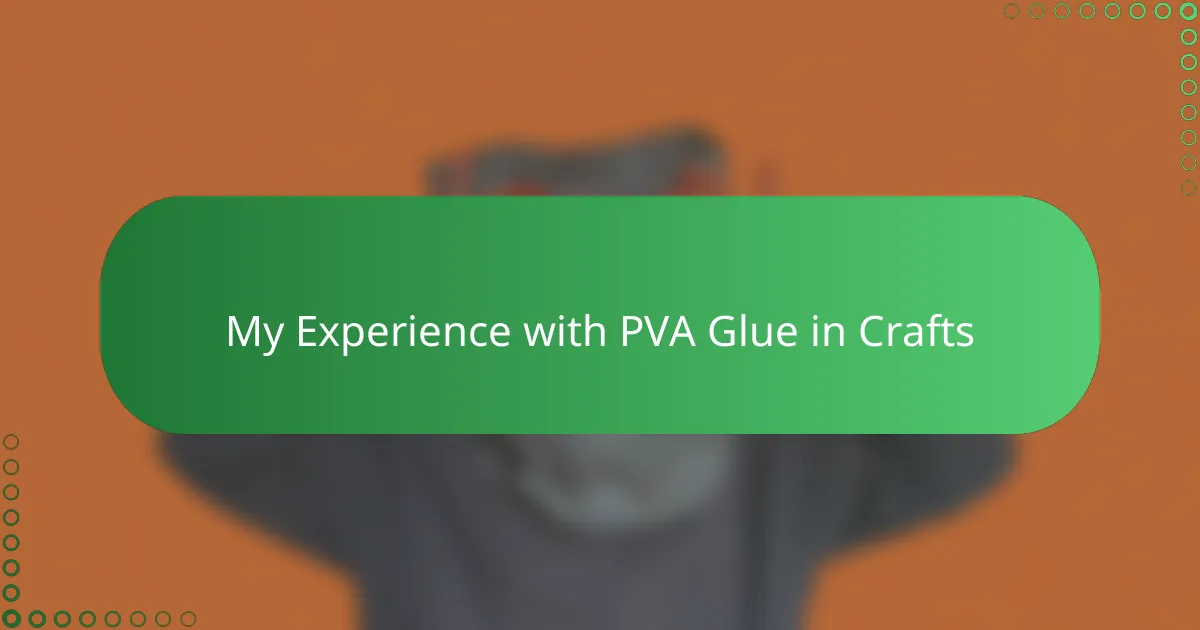Key takeaways
- PVA glue is a versatile and reliable adhesive ideal for paper crafts, offering strong yet flexible bonds without causing warping or wrinkles.
- Applying glue in thin, even layers and using appropriate tools, like brushes and palettes, enhances control and minimizes mess during crafting.
- Patience is crucial; allowing glue to dry completely between layers leads to cleaner results and prevents misalignment in paper projects.
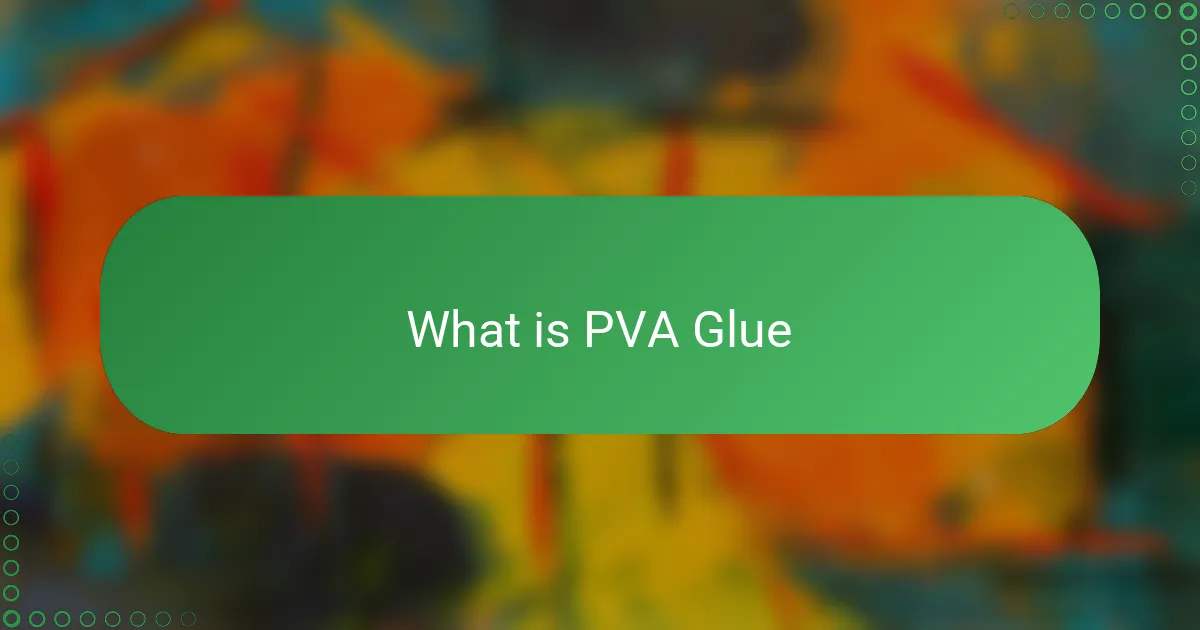
What is PVA Glue
PVA glue, or polyvinyl acetate glue, is a type of adhesive widely used in crafting and woodworking. From my experience, it’s that reliable, white glue that dries clear, making it perfect for delicate projects like handmade paper crafts. Have you ever noticed how it feels just right—not too runny, not too thick—giving you control while you work?
What I find fascinating about PVA glue is its versatility. It bonds paper, wood, and fabric seamlessly, which is why I keep a bottle handy during almost every craft session. Over time, I realized it’s not just an adhesive but almost like a partner that supports creativity without fuss or mess.
Sometimes, I wonder why PVA glue gets overlooked in favor of flashier adhesives. Maybe it’s because it doesn’t come with dramatic effects, but in its quiet way, it holds things together beautifully. That simplicity makes it my go-to choice whenever I want durability and a professional finish.
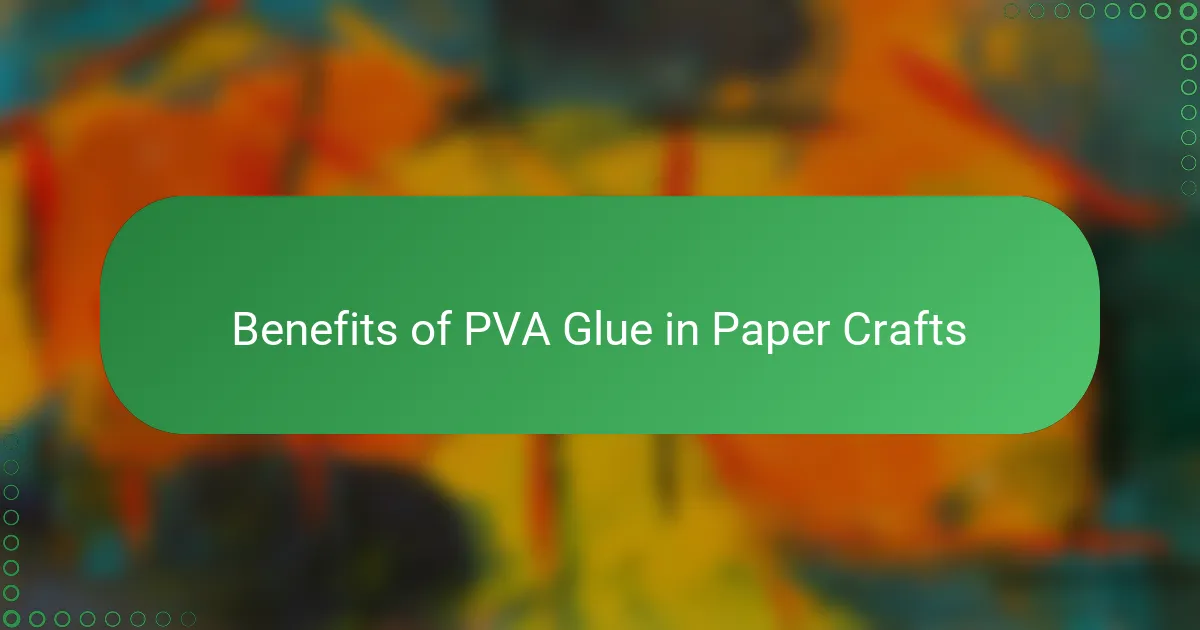
Benefits of PVA Glue in Paper Crafts
One of the biggest benefits I’ve noticed with PVA glue is how strong yet flexible the bond becomes. When I’m layering pieces of handmade paper, it holds everything firmly without making the paper stiff or brittle. Have you ever tried other glues that end up wrinkling or soaking through your paper? PVA doesn’t do that, which feels like a small but huge win every time.
Another thing I appreciate is how fast it dries clear. There’s nothing worse than seeing a cloudy glue spot ruining the look of a delicate paper design. With PVA, I can glue and keep working immediately, confident that my project will look clean and polished once dry. This has definitely saved me from having to redo pieces or stress over unsightly marks.
Lastly, I love how easy it is to clean up. From my experience, a simple damp cloth can wipe away excess glue before it dries, so mistakes aren’t permanent disasters. This forgiving nature makes crafting less intimidating, especially when I’m experimenting and don’t want to worry about glue mishaps ruining the fun. Does knowing clean-up is simple make you more willing to try new techniques? For me, it sure does.
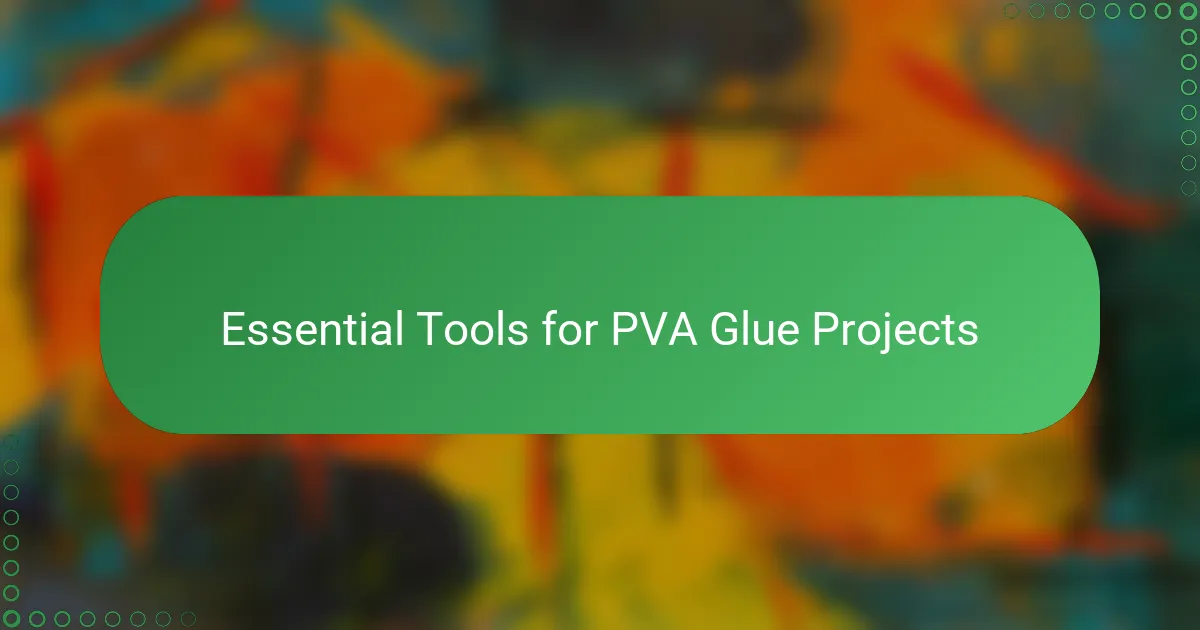
Essential Tools for PVA Glue Projects
Having the right tools makes all the difference when working with PVA glue. I always keep a small brush or foam applicator nearby because it lets me spread the glue evenly without soaking the paper—an essential step if you want to avoid wrinkles or warping. Have you ever tried to use just the glue bottle tip? It often feels clumsy and less precise.
Another must-have for me is a palette or a disposable plate where I can pour out a small amount of glue. This way, I control how much I’m using, preventing waste and mess. Plus, dipping the brush in a shallow pool of glue feels more natural, almost like painting, which adds a bit of calm to the process.
Finally, don’t underestimate the power of handy tools like wax paper or parchment sheets. When I layer glued paper, slipping these sheets between sections helps keep everything clean and prevents pieces from sticking together accidentally. It’s a simple trick that has saved me from a few heart-stopping moments of ruined projects. Have you tried this yet? It really changes the game.
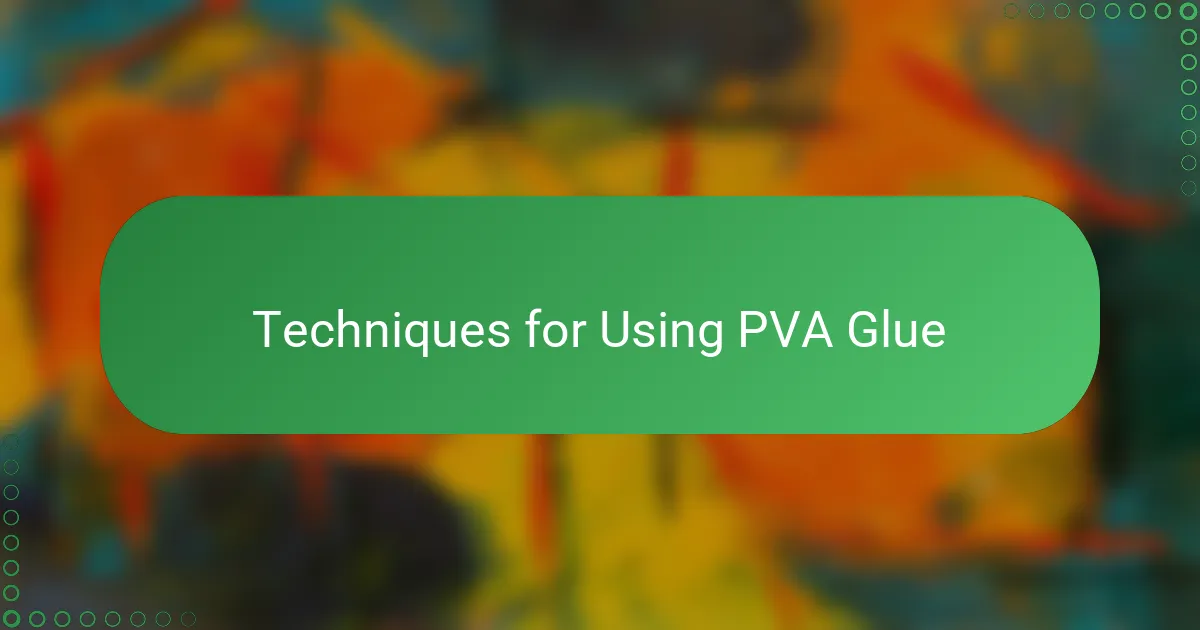
Techniques for Using PVA Glue
When I first started using PVA glue, I quickly learned that applying it in thin, even layers makes all the difference. Slathering on too much glue can cause the paper to warp or wrinkle, and I’ve definitely had my share of frustrated “oops” moments because of that. Have you noticed how a gentle brushstroke spreads the glue more precisely, almost like painting a delicate watercolor?
I like to work in small batches, applying glue to one piece at a time and then positioning it carefully before it starts to dry. This method gives me control and lets me adjust placement without the panic of it sticking prematurely. Sometimes, I pause and take a breath before pressing pieces together, making sure everything lines up just right—patience really pays off here.
Another technique I rely on is using a piece of wax paper under the glued area, especially when I’m layering multiple sheets. It prevents everything from sticking to my work surface, which saved me from a disaster or two! Do you use any tricks like this to keep your workspace neat? For me, these small steps turn the gluing process from a potential headache into a smooth, enjoyable part of crafting.
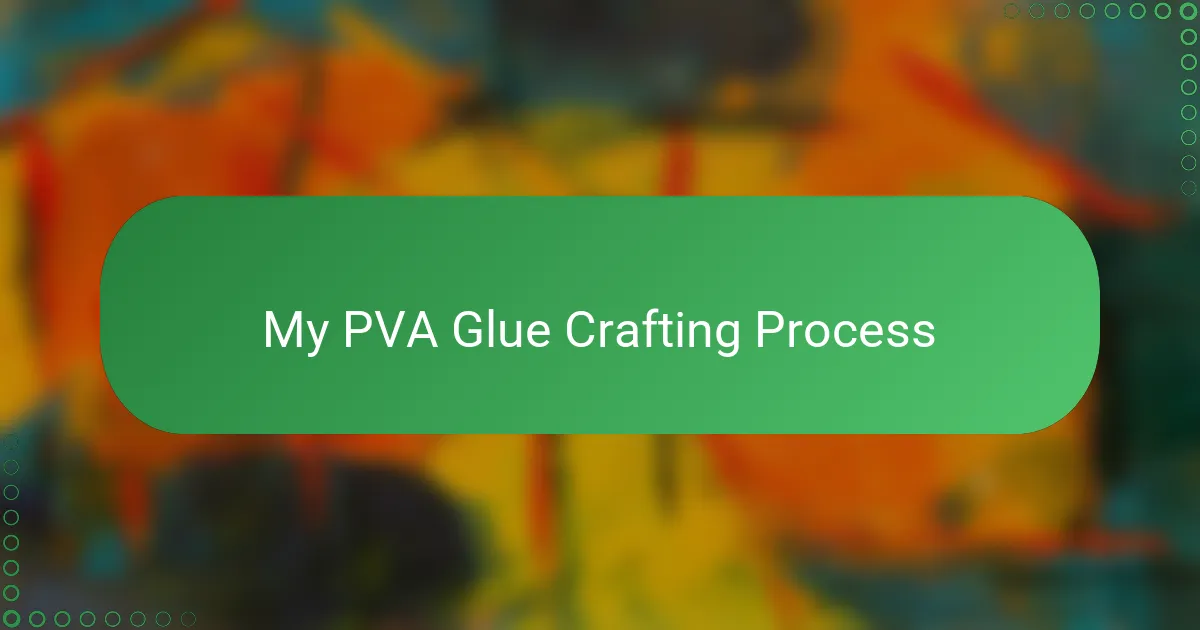
My PVA Glue Crafting Process
When I start a new paper craft project, my PVA glue process always begins with preparing my workspace carefully. I pour a small puddle of glue onto a disposable plate, which I find helps me avoid squeezing out too much from the bottle and making a mess. Have you ever felt the frustration of having glue drip where you don’t want it? This little step saves me from that every time.
Next, I take a soft brush and dip it lightly into the glue, then spread it in thin layers on the paper. From my experience, working patiently with gentle strokes prevents the paper from warping or bubbling. I remember one project where I rushed and applied too much glue, and the paper curled up so badly it took hours to fix—it taught me that slow and steady really wins the race with PVA.
Finally, I always give each glued piece some breathing room to dry before moving on. It might be tempting to rush and layer everything quickly, but waiting lets the bond set firmly without shifting or wrinkles. Do you find that waiting feels like a pause in the creative flow? For me, I’ve learned to embrace it as part of the rhythm that makes my craft projects turn out just right.
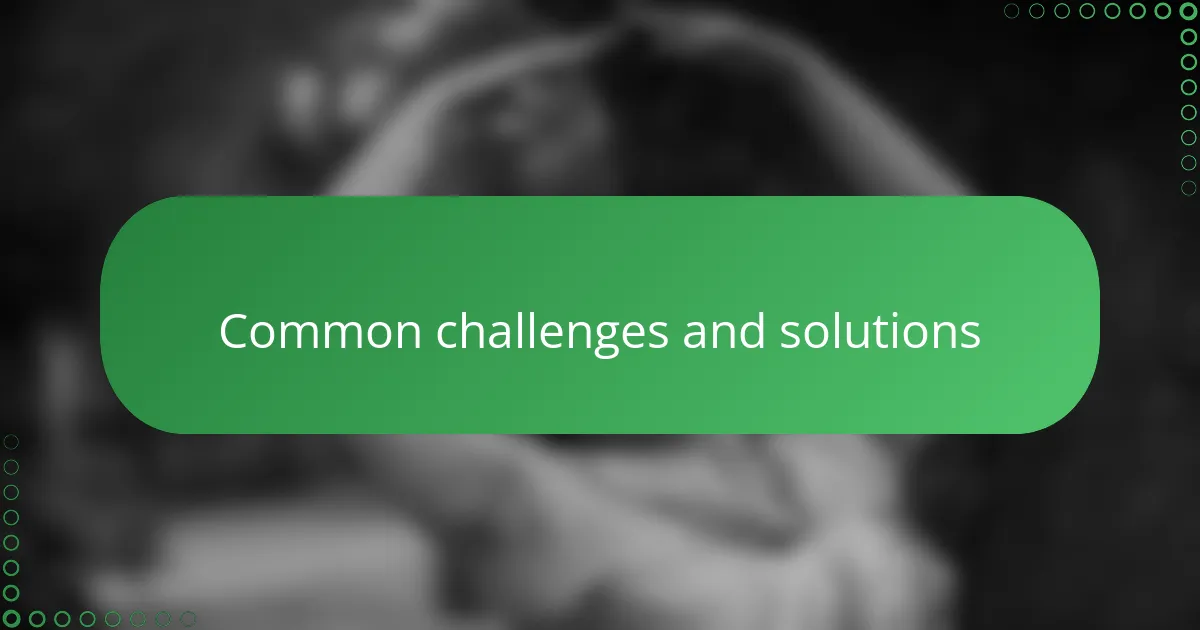
Common Challenges and Solutions
One challenge I often encounter with PVA glue is managing the drying time. Sometimes, I get impatient and press pieces together too soon, only to find them shifting or bubbling. Have you experienced that frustrating moment when your carefully placed paper slips out of alignment? I’ve learned that giving each layer enough time to dry really pays off, even if it feels like the creative flow is momentarily paused.
Another tricky part is preventing the paper from warping or wrinkling, especially when applying too much glue. Early on, I made the mistake of slathering glue on liberally, and the result was a curled mess that took ages to fix. What helped me was switching to a light touch with thin, even layers—like painting gently rather than pouring. This simple shift made a world of difference in keeping my projects neat and smooth.
Lastly, controlling the amount of glue can be surprisingly tough. Squeezing straight from the bottle often led to unwanted drips or glue pooling on the paper. I found that pouring a small amount onto a palette and using a soft brush gave me much better control. Have you tried this? It turns the glue application into a more calming, precise step rather than a potential source of frustration.
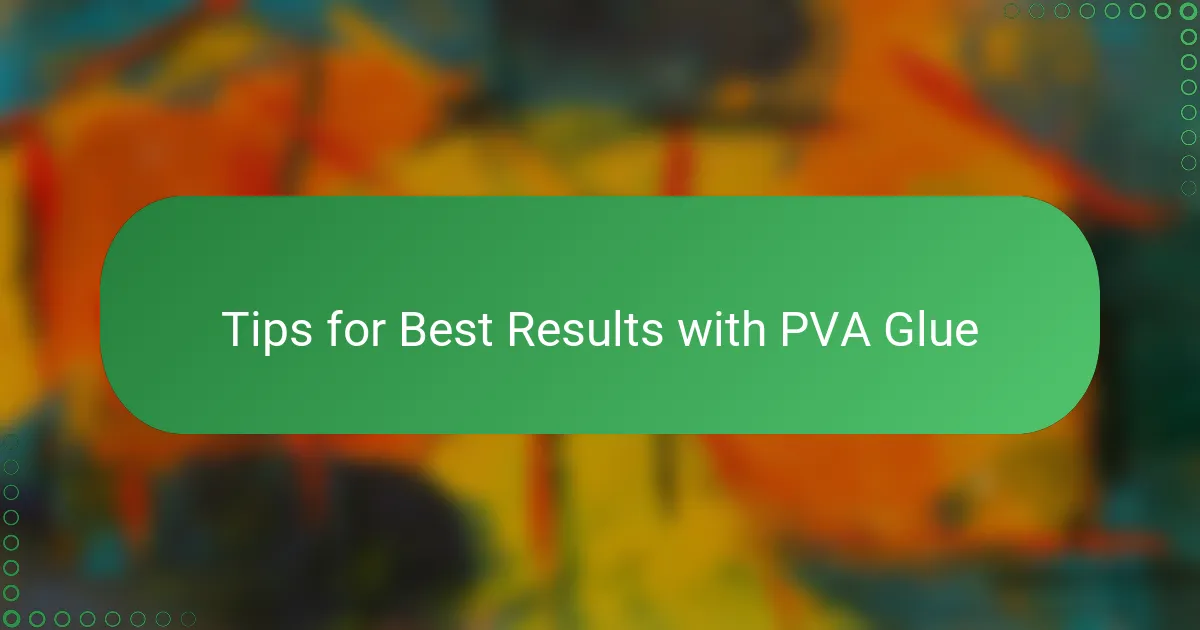
Tips for Best Results with PVA Glue
When I first started working with PVA glue, I quickly realized that applying it sparingly was key to success. Have you ever spread too much glue and ended up with warped or soggy paper? From my experience, using thin layers not only prevents damage but also speeds up drying, keeping my projects looking crisp and professional.
Another tip I swear by is working with a small brush rather than directly squeezing from the bottle. It gives me so much better control over where the glue goes and how much I use. Plus, dipping the brush into a shallow pool of glue feels almost like painting—something that adds a nice rhythm and calm to my crafting process.
Lastly, patience really makes a difference. Waiting for each layer to dry completely before moving on might feel like it slows you down, but I’ve found it saves a ton of headaches and keeps everything aligned perfectly. Have you experienced the frustration of pieces slipping out of place? Giving the glue time to set can transform your workflow from stressful to satisfying.
